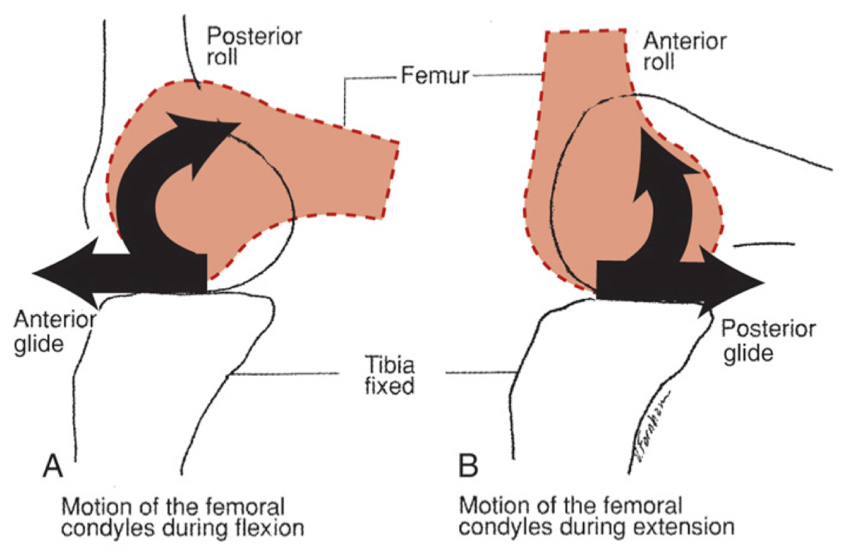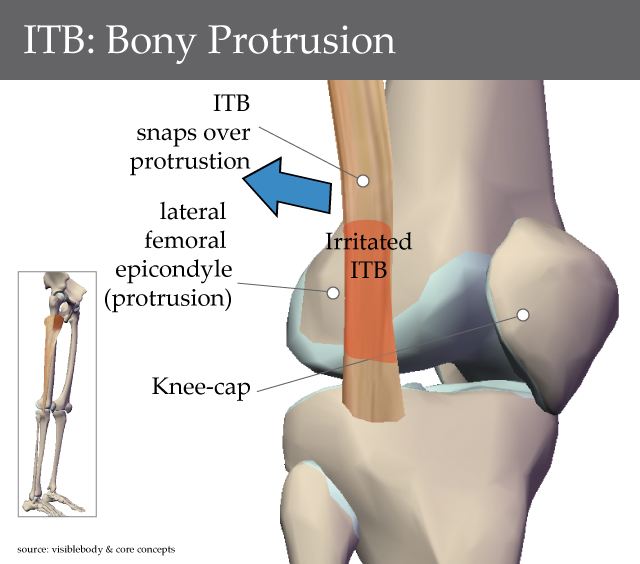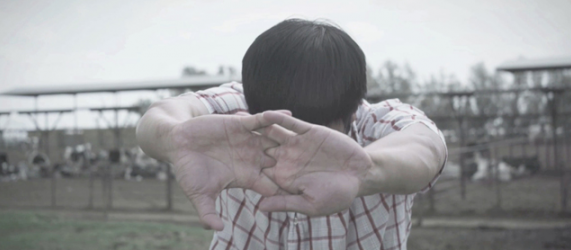For many people, their joints cracking, popping, and clicking is a daily event. Many of you crack your knuckles, back, and other joints when they’re feeling tight or uncomfortable. Still others have issues from snapping sounds when tissues move over each other. This article is for you to understand how and why these issues occur and if they are potentially dangerous to do.
First, you need to understand that there are separate two different phenomena. Cracking and popping are typically the same issue, but clicking is a fundamentally different issue. There are many causes for how they arise. Thus, by looking at how they arise we can evaluate the situation if there is a need for proactive prehabilitative protocol to prevent injuries.
Joint cracking & popping
First, the theory on how joints pop and crack is due to cavitation.
Cavitation is defined as the process of formation of the vapor phase of a liquid when it is subjected to re- duced pressures at constant ambient temperature.
When the joint is ‘cracked’ the volume within the joint capsule is increased through rapid stretching. When this occurs, the pressure drops within the synovial fluid — the fluid which lubricates your joints — which causes the small amounts of air dissolved within the fluid to come together and form bubbles. These bubbles that are formed spontaneously collapse on themselves as the stretching effect is reduced. The formation of these bubble and collapse via cavitation causes the popping/cracking sound.
The real question that you want to know is: “Does cracking or popping your knuckles cause injuries?”
There are various studies on the subject such as the follow:ing (1), (2), (3), (4), (5), (6), (7). There was also a 50 year case study done.
One of the studies above showed that the forces involved with the joint manipulation may have forces that exceed the force needed for articular damage. However, as a whole the evidence points to no increases in arthritis.
One of the studies also indicated that knuckle cracking increases the preponderance for joint swelling and grip strength loss as well as other traits such as manual labor, biting of the nails, smoking, and drinking alcohol. However, none of the other studies concluded this. There may be some logic to this in that people with overall bad habits and lots of stress may have increased cortisol production and the accompanying negative effects such as poorer recovery. However, I would not worry about it too much.
The swelling and loss of grip strength is particularly interesting. Everyone has different genes for how tight the articular capsules of their joints are. If you have joints that are particularly lax (meaning “double jointed” in laymans terms), it may not be a good idea to crack your knuckles.
Lax joints are associated with increases in orthopedic injuries and lower strength. Since the joints themselves are a bit more unstable because of the looseness of the connective tissue, the body cannot generate as much force lest it injure itself. Therefore, potentially increasing this joint laxity may be a problem.
This is common in sports with excessive flexibility work such as rhythmic gymnastics where the articular joint capsules can be stretched out significantly. As a precautionary measure if you have looser joints I would avoid cracking them just in case it may present problems down the line. This is especially true if you notice that your joints are being “stretched out” so that they can move further and further each time you crack them.
Obviously, laxity in joints can be compensated with proper strength work to an extent so such things are always beneficial as well.
Finally, crepitus can be present where there is degeneration in the joint, and it cracks inadvertently. If you suspect you have something similar, it’s obviously best not to crack them more than they are.
Verdict: Cracking or popping the knuckles or other joints does not appear to increase risk of arthritis. However, for those with general laxity in their joints, it may potentially cause some issues such as joints swelling or loss of grip strength.
Joint clicking
The common answer to joint clicking is that if it is painless it is fine. I agree with this assessment especially if you have always had it. For example, people with more lax joints as described above may have always had issues with clicking albeit not painful clicking. This is fine. The general solution with lax joints and clicking in the knees, hips, elbows, and shoulders is proper strength work. Keeping the joints strong and balanced with proper biomechanical movement will stave off potential injuries.
However, if you have not always had joint clicking, and it is acute onset from particular sports, weightlifting, or other activities I would reexamine the activity to ensure that the clicking may not devolve into something insidious. In most cases, injuries can be boiled down to issues of
- Posture
- Biomechanics
- Mobility
- Muscle balance/tension relationships
When these aspects are compromised especially the limbs – ankles, knees, hips, wrists, elbows, shoulders – there is potential for clicking and popping to begin and potentially become malicious.
Let’s look at the knees for a specific example since it is the most common source of clicking (shoulder coming in at a close second). In particular the knee is special in that it has two extra pieces of articular cartilage, the menisci, in between the femur and tibia clicking is fairly common in many cases. It is not always insidious however.
In most cases the neural factors of posture and movement biomechanics contribute heavily to the deficiencies that develop in mobility and many muscle imbalances that arise. It is the development of such imbalances or limitations in mobility that have the potential to cause clicking within the knee to devolve into painful wear on the cartilage. For example, we discuss in Shoes, Sitting, and Lower Body Dysfunctions that there is often the development of a very quad dominant and very hamstring weak individual.
Such imbalances give rise to problems with the articulation of the joint itself. When synovial joints move against each other they must simultaneously glide and roll to function correctly.

Image from Studyblue.com
When mobility is limited by tight muscles and there are imbalances within antagonistic muscles, the biomechanics of the movement degrade.
Particularly with the knee if the hamstring do not engage correctly during walking or squatting motions, there is likely an excessive anterior glide of the femur on the tibia. This places a much larger torque on the patellofemoral complex. This is bad for multiple reasons:
- Excessive anterior gliding of the femur may start to impinge the anterior portions of both the medial and lateral menisci which cause clicking. This wears down the meniscus and articular cartilage faster contributing to osteoarthritis.
- Excessive anterior gliding of the femur puts more strain on the ligaments such as the ACL.
- The increased torque on the patellofemoral complex causes the quads to become much more active thus aggravating the imbalance of the quadriceps:hamstring strength ratio.
- The increased torque on the patellofemoral complex may lead to chondromalacia patellae or patellofemoral syndrome or other problems.
These problems are not just manifestations of the whole knee complex. Weakness and decreased mobility at the ankles and hips may also contribute to dysfunctions at the knee. Same with the shoulder, elbows, and wrists.
This is why teaching proper posture and biomechanics while improving mobility and imbalances is so important. For example, we can use box squatting — focusing on sitting back properly to engage the hamstrings and glutes — to help negate quad dominance. This occurs because sitting back shifts the weight distribution of the squat towards the heels will keep the shins upright thus decreasing the torque on the patellofemoral complex and the engagement of the hamstrings will help negate excessive anterior gliding of the femur. This should make the knee joint function properly, and it teaches perfect movement.
Earlier I listed the shoulder as the second most common site of clicking. While it does not have two extra pieces of cartilage as the knee, it has the most mobility and range of motion as any of the joints in the body. It also has the glenoid labrum which is a circular piece of cartilage that lines the joint surface. Thus, if there are any large abnormalities within alignment and posture it can cause the joint to click.
Verdict: Clicking is generally not an issue if you’ve always had it. However, if you are having onset clicking issues and you notice that you have problems with posture, biomechanics, mobility and muscle imbalances you may have an insidious onset of clicking that may devolve into worse problems. In many cases correct the imbalances with proper strength and mobility work should improve the condition significant and even eliminate cartilage clicking. I’ve seen this with numerous patients and athletes.
Snapping sounds
If you have tissue that is rubbing and snapping over tissue. This signifies an injury condition.
Common examples are IT band snapping syndrome and triceps snapping syndrome along with other problems such as nerve and tendon snapping/popping. In all of these cases, there is likely some underlying problems related to posture, biomechanical, mobility and muscle imbalances. This is not unlike the clicking scenario.
In IT band snapping syndrome, the IT band can get stuck on the lateral femoral epicondyle, build up force, and then snap over the protrusion. This is similar to your fingers snapping and making a sound where you build up tension in your fingers before the move past each other. In snapping syndromes, this sometimes makes an audible noise like snapping the fingers.

Image from coreconcepts.com
The “quick fix” to eliminate the pain and snapping quickly is to loose up the tissues with soft tissue massage, good biomechanics, and potentially anti-inflammatory drugs. However, to eliminate the problem entirely all of the factors that contribute to their development from the four attributes (posture, biomechanics, mobility and muscle imbalances) must be examined and corrected.
This is where a skilled medical professional can help substantially. See one.
Verdict: If you have snapping or movement of tendons or muscles bumping over each other, get it checked out by a medical professional who can get you the help you need.
In conclusion
- Joint cracking and popping does not cause increased incidence of arthritis.
- If you have lax joints, you may want to avoid cracking them just in case it may present problems later due to destabilization of the joint. Focus on increasing strength of the muscle/tendons that connect there. This is especially true if you notice the laxity is increasing over time.
- Clicking without pain is in generally fine, especially if it has been there all of the time.
- Onset of clicking, especially with pain, may devolve into potential problems later on. Correct assessment of posture, biomechanics, mobility and muscle imbalances should be initiated through proper strength, mobility, and soft tissue work. This typically eliminates the clicking most of the time. See the appropriate medical professional such as an orthopedic doctor or physical therapist for rehabilitation solutions.
- Snapping typically signifies injury conditions. See the appropriate medical professional such as an orthopedic doctor or physical therapist to get direction.
Now that you know what cracking, clicking, popping, and snapping are and what to do about them you should be able to make more informed decisions about your health.
This article was originally published March 1st, 2010 on Eat Move Improve. Updated Jan 2017.
Questions about articles may be addressed to the Overcoming Gravity reddit.
Disclaimer: Any information contained on this site should not be misconstrued as professional medical advice. Always consult your appropriate medical professional before using such information. Use of any information is at your own risk. See also: Full disclosure of site terms and conditions.
Author: Steven Low
Steven Low is the author of Overcoming Gravity: A Systematic Approach to Gymnastics and Bodyweight Strength (Second Edition), Overcoming Poor Posture, Overcoming Tendonitis, and Overcoming Gravity Advanced Programming. He is a former gymnast who has performed with and coached the exhibitional gymnastics troupe, Gymkana. Steven has a Bachelor of Science in Biochemistry from the University of Maryland College Park, and his Doctorate of Physical Therapy from the University of Maryland Baltimore. Steven is a Senior trainer for Dragon Door’s Progressive Calisthenics Certification (PCC). He has also spent thousands of hours independently researching the scientific foundations of health, fitness and nutrition and is able to provide many insights into practical care for injuries. His training is varied and intense with a focus on gymnastics, parkour, rock climbing, and sprinting. Digital copies of the books are available in the store.
